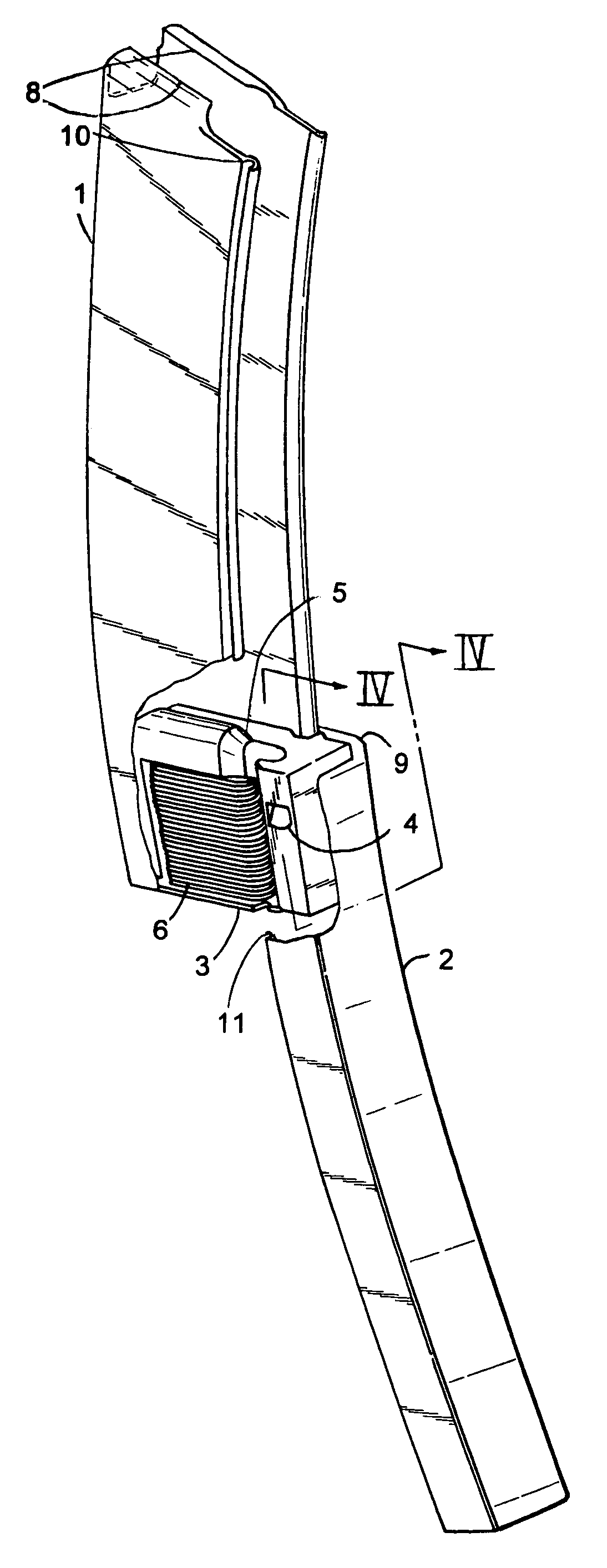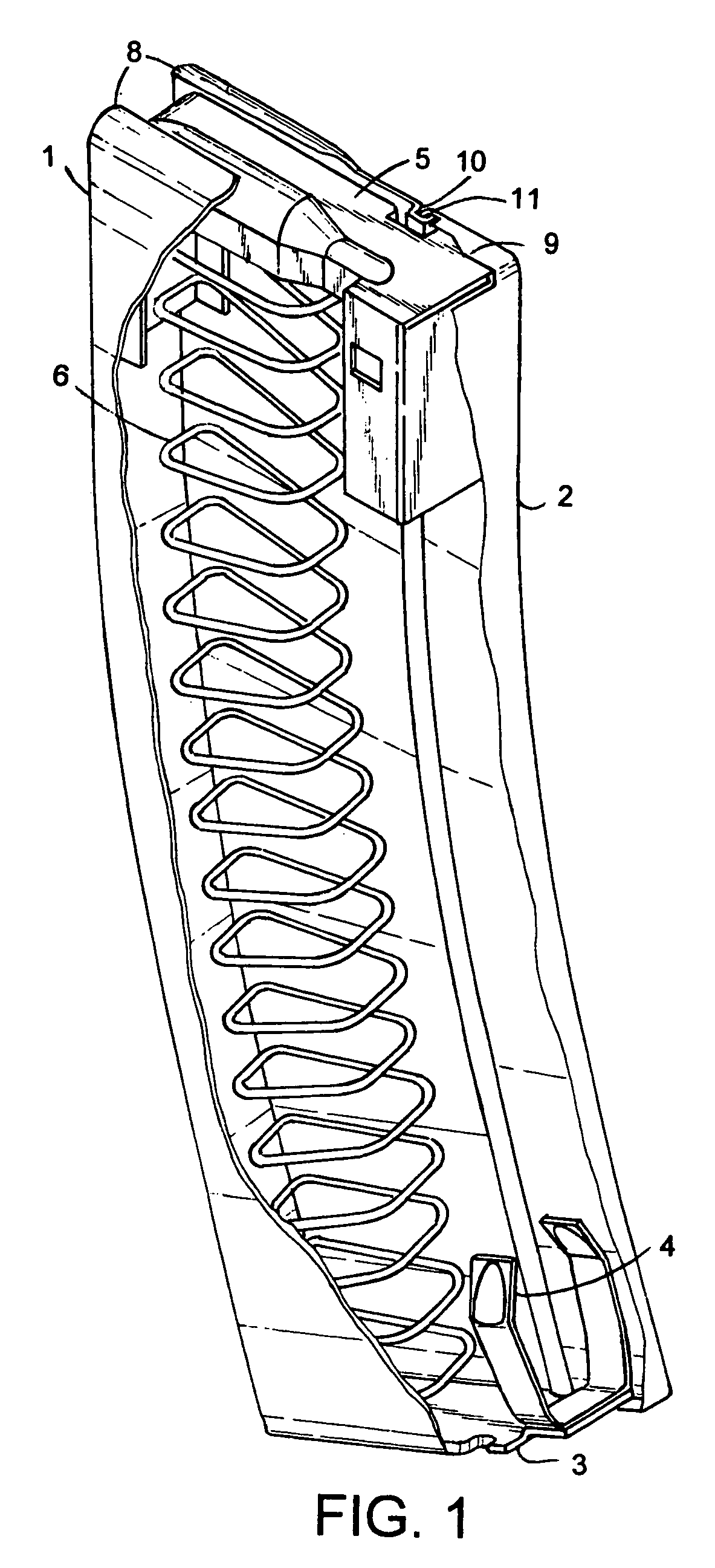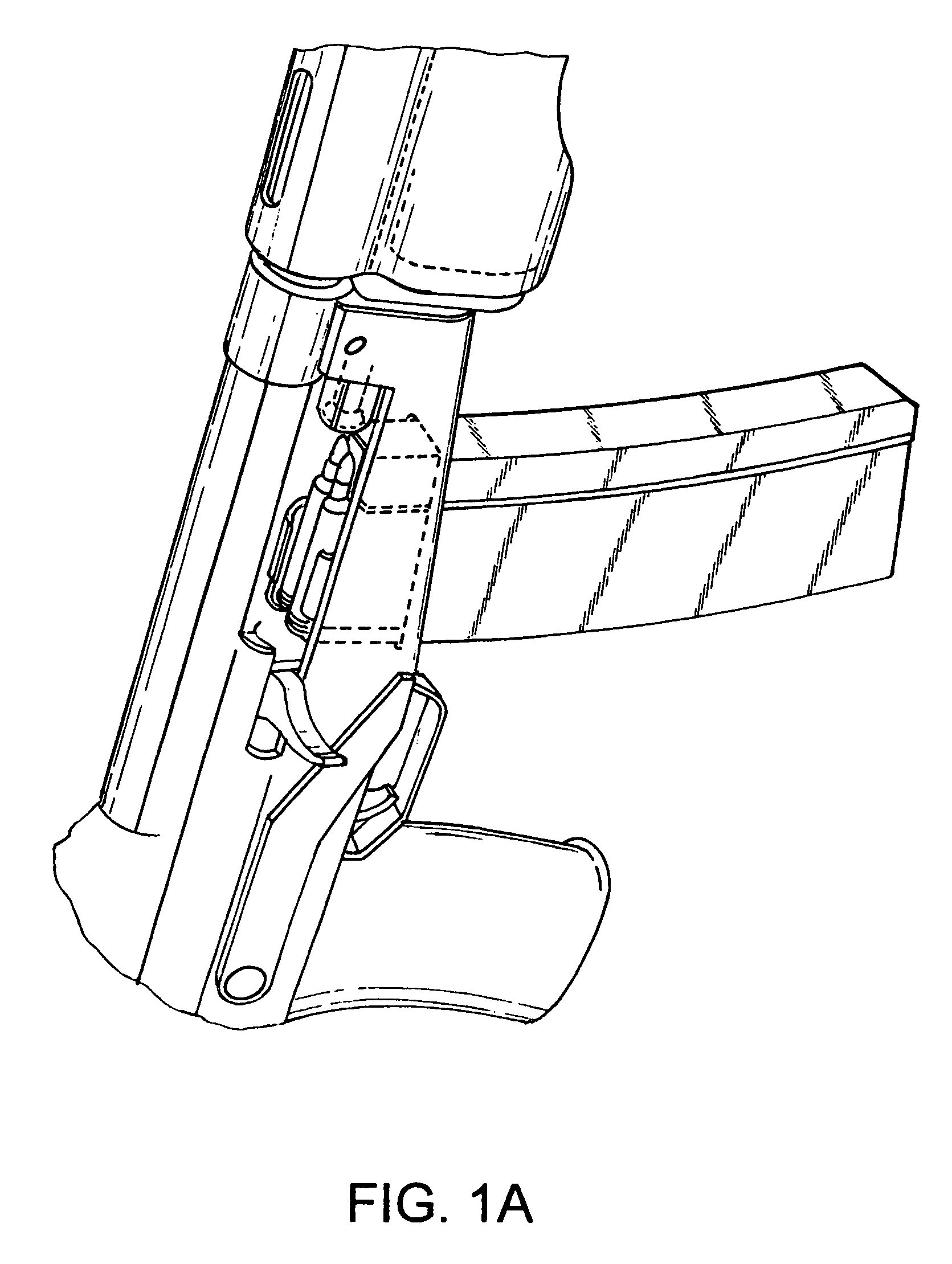Firearm magazine
a cartridge magazine and magazine technology, applied in the field of cartridge magazines, can solve the problems of reducing the resistance of the plate to debris intrusion, affecting the sliding ability of the plate, and affecting the design of the magazine, so as to improve the conventional design, the effect of reducing the restriction of opening and loading
- Summary
- Abstract
- Description
- Claims
- Application Information
AI Technical Summary
Benefits of technology
Problems solved by technology
Method used
Image
Examples
Embodiment Construction
[0035]The present magazine accomplishes improved functions by separating the illustrated magazine into two portions including the containing body (1) and the closure member (2) (also called an “opening body” or “cover” herein). The two portions are held together on each side by a slide rail (10 / 11) on each side. The slide rail 10 / 11 is formed by mating flanges formed on edges of the overlapping side walls, forming a track and slide arrangement, as described below. Advantageously, the side walls of the closure member (2) are sufficient in size to form a handle-like surface on the closure member (2) that can be grasped, allowing the closure member (2) to be gripped and moved to an open position without the need for a separate handle or protruding tab or ring.
[0036]The illustrated slide rail (10 / 11) consists of interlocking shapes. For example, the containing body (1) including a female indent or outwardly facing groove or track (10) along its entire edge at the separation, and the clo...
PUM
 Login to View More
Login to View More Abstract
Description
Claims
Application Information
 Login to View More
Login to View More - R&D
- Intellectual Property
- Life Sciences
- Materials
- Tech Scout
- Unparalleled Data Quality
- Higher Quality Content
- 60% Fewer Hallucinations
Browse by: Latest US Patents, China's latest patents, Technical Efficacy Thesaurus, Application Domain, Technology Topic, Popular Technical Reports.
© 2025 PatSnap. All rights reserved.Legal|Privacy policy|Modern Slavery Act Transparency Statement|Sitemap|About US| Contact US: help@patsnap.com



